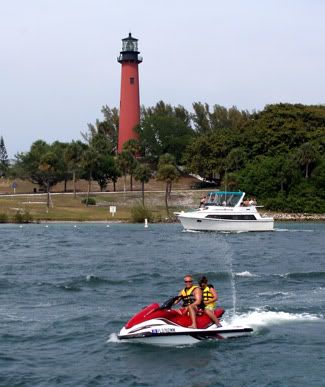$35,000 was provided by Congress in 1853 for establishing a lighthouse near Jupiter inlet, to mark the dangerous shoals lying off that point, and to guide vessels along that coast. The finished cost totaled $60,859.98. Operation started on July 10, 1860.
The lighthouse was to be built atop a hill with an elevation of forty-six feet with a finished height of 108' [That is high for FL.]
During the restoration work in 1999-2000, archaeologists uncovered shells and pottery fragments on the hill near the base of the tower. The artifacts are believed to be remnants of a Native American colony, dating from around 700 AD.
In 1855 a third Seminole War broke out, stopping all construction, but in 1858 the conflict was resolved and construction resumed.
The working lighthouse was again interrupted by the Civil War. In August of 1861, a “band of lawless persons visited the Jupiter Inlet” Lighthouse, and “removed the illuminating apparatus.” It is unclear exactly what was removed, and the light remained dark throughout the the war. The missing parts of the “illuminating apparatus” were recovered in a palmetto hammock near Lake Worth creek by Captain James A. Armour. The lighthouse returned to operation on June 28th, 1866, Captain Armour was appointed an assistant keeper under William Davis.
In the lantern room, where a magnificent first-order Fresnel lens manufactured in Paris by Henry-LePaute was installed. When revolving, the four bulls-eyes in the lens produce the repeating cycle of two flashes followed by a period of darkness.
I can tell you this is a very busy spot.
